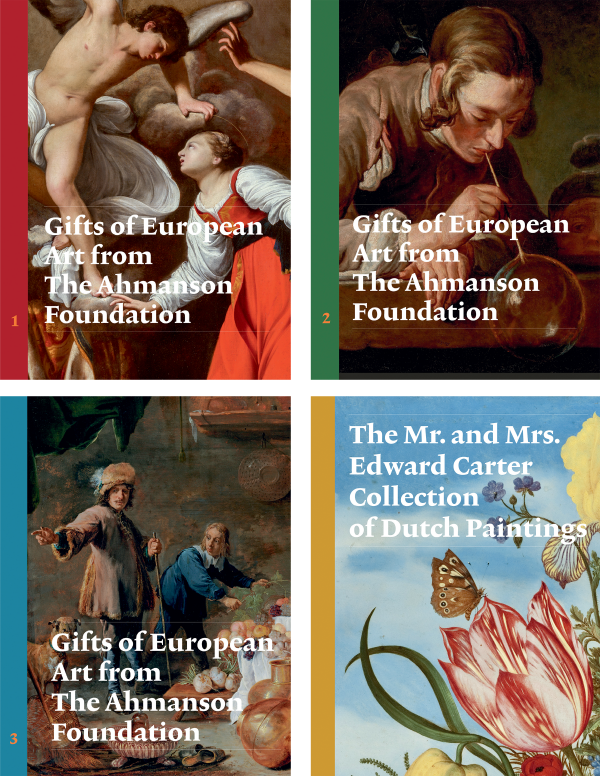We are pleased to celebrate the publication of two new, free, and digitally accessible catalogues documenting the collections of the Department of European Painting and Sculpture: the three-volume Gifts of European Art from The Ahmanson Foundation and The Mr. and Mrs. Edward Carter Collection of Dutch Paintings.
The result of over a decade’s work by a team of curators and conservators, both catalogues present new scholarly research for over 150 works of European painting and sculpture. Each artwork is the subject of a discursive entry that includes updated bibliography, provenance, and exhibition history, and the Carter catalogue also includes detailed technical analysis, prepared by LACMA’s team of expert conservators and scientists. It is with great enthusiasm that we present these catalogues as part of our initiative to publish significant scholarly content about our permanent collection and make it available online, easily accessible to scholars, connoisseurs, students, and the general public.
Gifts of European Art from The Ahmanson Foundation
Howard F. Ahmanson was pivotal to the museum’s independent foundation on Wilshire Boulevard in 1965, and following his death, The Ahmanson Foundation has played a crucial role in the development of the European Painting and Sculpture department at the museum over the following five decades. This comprehensive catalogue traces an extraordinarily unique relationship between The Ahmanson Foundation and LACMA across nearly 50 years of the former bestowing masterpieces of European painting and sculpture on the latter. With the exception of a select group of gifts from Howard F. Ahmanson’s private collection, for 45 years The Ahmanson Foundation has graciously followed the museum’s suggestions in determining what exactly it has needed to transform itself into one of the most impressive of its kind in the world and provided the means to make those acquisitions possible. The fruits of this relationship are tangible, and the generosity, understanding, and, above all, trust, are by all accounts exceptional.
Published in three volumes—the first dedicated to Italian paintings and sculpture, the second, to French works of art, and the third, to Dutch, Flemish, and Spanish paintings and sculpture—the catalogue presents new scholarly research on the roughly 135 works of art purchased or gifted by The Ahmanson Foundation to the Department of European Painting and Sculpture since 1972. Nearly all of the gifts were chosen at the suggestion of the museum, with curatorial, directorial, and conservation input. Trust in the museum’s expertise by the Foundation is not only a truly unique privilege, it cannot be overacknowledged.
The Mr. and Mrs. Edward Carter Collection of Dutch Paintings
A major force in driving the independent formation of LACMA in 1965 and the first president of its board of directors, Edward William Carter was also a deeply sensitive connoisseur. His interest in collecting 17th-century Dutch landscapes and still lifes of extraordinary high quality resulted in a superb selection of quiet masterworks, largely unmatched in private hands. Together with his wife, Hannah, who was equally supportive of the museum, its goals, and its service to the public, he gifted the extraordinary collection they had assembled to LACMA in 2009.
Published on the 10th anniversary of the Carters’s historic gift, this catalogue offers new scholarship, supported by technical discoveries made by our conservation team, in celebration of an important group of European paintings from our encyclopedic collections. The 36 paintings that make up the Mr. and Mrs. Edward William Carter collection comprise some of the best examples of 17th-century Dutch painting in the United States. Whether it is Hendrick Avercamp’s festive scene of skaters on a frozen canal, Clara Peeters’s exquisite still life, or Pieter Jansz. Saenredam’s meditative interior of the Sint-Mariakerk in Utrecht, the paintings in the Carter collection also offer a personal reflection of the collectors and their tastes.
Both catalogues are deep, scholarly considerations of an extraordinary group of paintings and sculptures from the history of art. Moreover, they are a marker of the importance of the public that both the institution and donors have long committed to serve.
This article was first published in the Fall 2019 issue of Insider.



